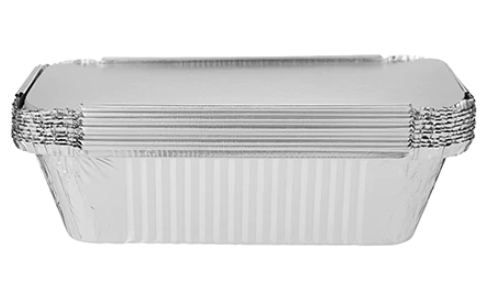You might have wondered which side of the aluminum foil should be exposed when you are preparing or storing hot foods in containers made of aluminum foil. The bright side or the dark side? Given that the two sides have very different properties in terms of how well they conduct heat, this is an essential consideration. In this piece, we will discuss the characteristics that differentiate the shiny and dull sides of aluminum foil, as well as provide recommendations regarding which side is best for use with hot foods.
Having Knowledge of Both the Shiny and the Matte Sides of Aluminum Foil
Aluminum foil is an extremely thin material that is predominantly composed of aluminum. It is manufactured by passing sheets of aluminum through rollers, which causes the sheets to become thinner. During this step, one side is given a shiny finish by polishing it, while the other side retains its matte appearance. Because it was polished to a smooth finish during manufacturing, the side of aluminum foil that has a shiny finish is very reflective. Because of this, it is an excellent reflector of light as well as heat and electromagnetic waves. On the other hand, the surface of the dull side has a more granular and matte appearance. Because light is diffused rather than reflected off of this textured surface, it gives the impression of being opaque. Because of the difference in texture between the two sides, there is a significant difference in their ability to conduct heat. This is referred to as their thermal conductivity. Because of its smooth and polished surface, the side that is shiny is able to conduct heat much more effectively than the side that is dull. When storing hot foods in aluminum foil containers, this is an important consideration to keep in mind.
Why Is It Best to Serve Hot Food in Aluminum Foil Containers With the Matte Side Up?
It is generally recommended to use the dull side facing out when wrapping hot foods in aluminum foil or storing them in aluminum foil containers. This is because the dull side conducts heat less efficiently than the shiny side.
Here are some of the most important ones:
Insulation and Does a Better Job of Keeping the Heat In The rougher surface of the dull side provides better insulation than the shiny side because it is better at trapping air pockets between the food and the foil. This makes it more difficult for heat to be conducted away from the food through the process of conduction. As a result, the dull side of aluminum foil containers is better at retaining heat, which allows foods to remain hotter for longer. Protects Against Burning and Hot SpotsThe shiny side of the foil quickly and directly transfers heat from the hot food to the surface of the foil. Because of this, the foil at the contact points may catch fire or develop hot spots.
The dull side has a slower heat conduction rate, which helps to distribute the heat more evenly and prevents hot spots. It avoidsCondensation can lead to messes. It is more likely for any steam or moisture that is released from hot foods to condense on the shiny side due to the high reflectivity of the shiny side. This has the potential to make a soggy mess inside of foil containers. The dull side helps prevent condensation, making food storage and transportation much more hygienic.
When Served, the Food Looks More Attractive
Wrapped foods that have the shiny side of the foil facing out may look unappealing as a result of condensation, burns, or stains. When serving hot dishes that are wrapped in foil, the dull surface helps to maintain a neater appearance overall. In conclusion, placing hot foods in containers made of aluminum foil with the matte side facing up maximizes the amount of heat that is retained while simultaneously reducing the risk of burns, condensation, and other unpleasant side effects. It maintains the temperature of the food and makes it look better for a longer period of time. Bottles, containers, cans, jars, HDPE, PP, and PET bottles can all be sealed using an aluminum foil machine. Aluminum foil provides the basis for a brand-new, one-of-a-kind Christmas decoration idea, which can be made in a thrifty and do-it-yourself
